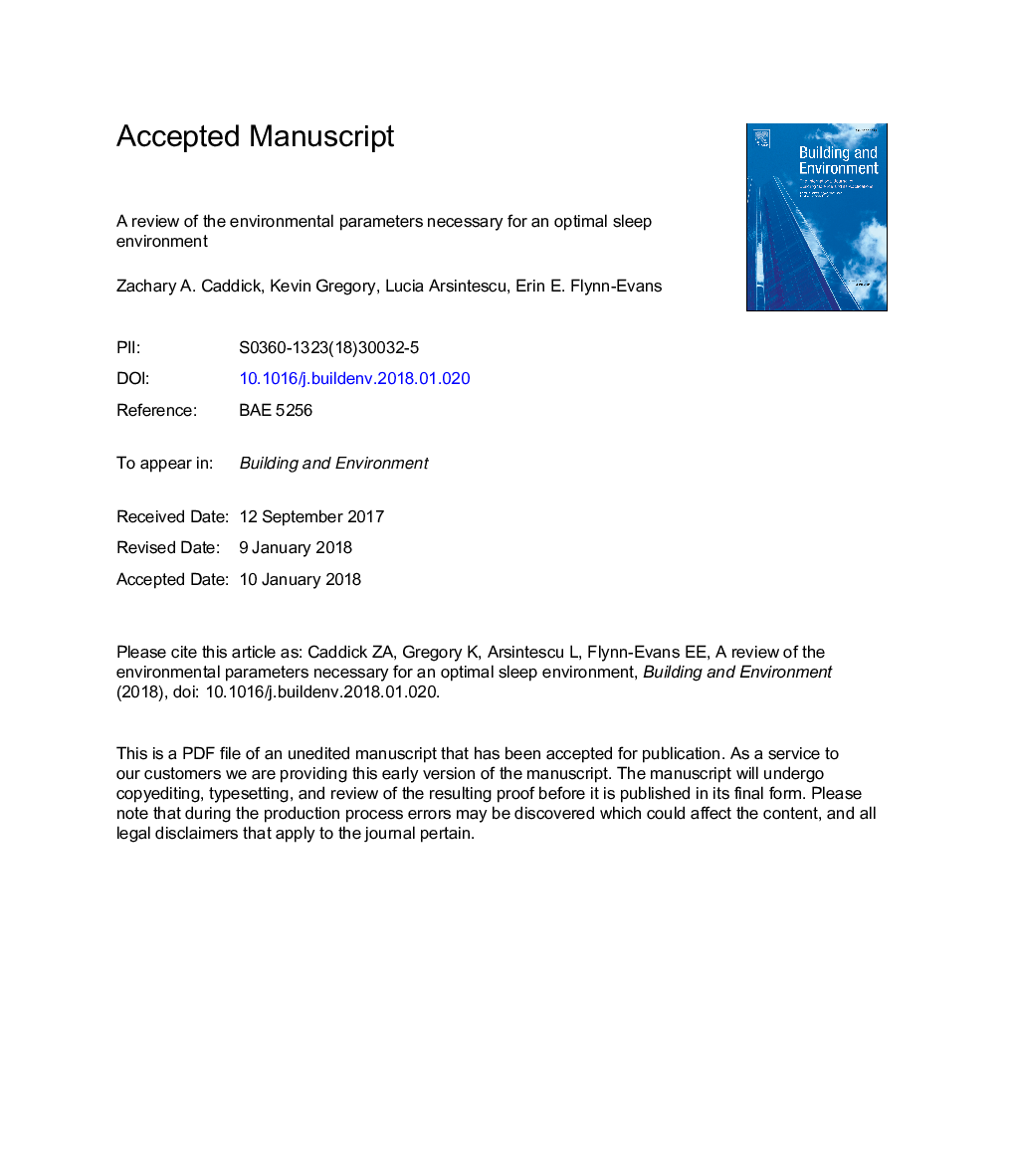| Article ID | Journal | Published Year | Pages | File Type |
|---|---|---|---|---|
| 6697840 | Building and Environment | 2018 | 38 Pages |
Abstract
An appropriate sleep environment is critical to achieve adequate quality and quantity of sleep. General sleep hygiene recommendations suggest that individuals should maintain a cool, dark, quiet sleep environment. Our goal was to conduct a review of the evidence surrounding the optimal characteristics for the sleep environment in the categories of noise, temperature, lighting, and air quality in order to provide specific recommendations for each of these components. We found that all forms of noise in the sleep environment should be reduced to below 35â¯dB. The optimal ambient temperature varies based on humidity and the bedding microclimate, ranging between 17 and 28â¯Â°C at 40-60% relative humidity. Complete darkness is optimal for sleep and blue light should be avoided during the sleep opportunity. Sea level air quality, with ventilation is optimal for sleep and supplemental oxygen is a useful countermeasure for improving sleep quality at altitude. Architectural design that incorporates these elements into bedroom design may improve sleep quality among inhabitants of such environments.
Related Topics
Physical Sciences and Engineering
Energy
Renewable Energy, Sustainability and the Environment
Authors
Zachary A. Caddick, Kevin Gregory, Lucia Arsintescu, Erin E. Flynn-Evans,
